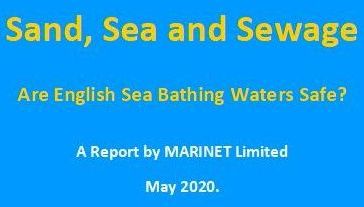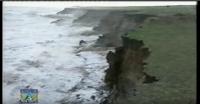High-Seas fish biodiversity is slipping through the governance net
With negotiations resuming at the United Nations to construct a new High Seas Treaty to supplement the UN Law of the Sea, we provide here an article by Guillermo Ortuno Crespos et al, published in Nature Ecology and Environment Vol. 3 pages 1273-1276 (2019) which seeks to cover the following issues: “States at the United Nations have begun negotiating a new treaty to strengthen the legal regime for marine biodiversitybiodiversity Biological diversity in an environment as indicated by numbers of different species of plants and animals. in areas beyond national jurisdiction. Failure to ensure the full scope of fish biodiversity is covered could result in thousands of species continuing to slip through the cracks of a fragmented global ocean governance framework.”
The article, published 26th August 2019, states:
Over the past 70 years, commercial fisheries have expanded farther and deeper into the open ocean. [Ref.1,2,3,4 Note: either click on the ref. number for an online link or alternatively see the end of the article for the reference details] impacting many forms of marine biodiversity that exist in areas beyond national jurisdictions (ABNJ; generally, the area beyond 200 nautical miles from shore). [Ref 5,6]
The growth of other industries, such as shipping, has further expanded the presence of humans in the open ocean, while new activities, such as seabed mining, are on the horizon1.
These impacts are compounded by the effects of a changing climate, deoxygenation and ocean acidification. [Ref 7,8,9]
In 2017, after more than a decade of informal discussions at the United Nations (UN) regarding gaps in the legal framework for the conservation and management of marine biodiversity beyond national jurisdiction (known as the BBNJ process), states agreed to convene an intergovernmental conference for the negotiation of an legally binding instrument under the UN Convention on the Law of the Sea (UNCLOSUNCLOS The United Nations Convention on the Law of the Sea, also called the Law of the Sea Convention or the Law of the Sea treaty.) (an ‘implementing agreement’) [Ref 10]
The agreement to launch the negotiations was partly achieved by the consensus that any new instrument “should not undermine existing legal instruments and frameworks and relevant global, regional and sectoral bodies”. [Ref 10] This has generally been assumed to mean that the new instrument should complement and strengthen the existing framework and prevent the adoption of weaker or dissonant management measures. However, a small number of states wish to see commercial fisheries (including all forms of fish biodiversity, which they group as a commercial resource whether or not it is harvested) excluded from a new agreement and are concerned that any new provisions will inevitably undermine existing fisheries management bodies.
However, there is a significant difference between the number of fish species subject to management and the number of fish species in ABNJ that may be impacted by commercial fishing activities. As fish are a major component of marine biodiversity in ABNJ and have a major role in marine ecosystem functioning, it is important to understand what regional fisheries management organisations (RFMOs) are in fact responsible for monitoring and managing.
Here, we contrast fish biodiversity estimates in ABNJ with a comprehensive database of existing fish population assessments to help delineate the current competencies of RFMOs and identify areas of improvement that could be addressed both through the new agreement as well as by strengthening the mandates and actions taken by such bodies.
We first describe the overarching legal framework for high-seas fisheries, then enumerate how many fish species are either targeted, affected or simply unstudied and potentially at risk of slipping through the cracks of the current management arrangements.
The final section analyses how these gaps are relevant to ongoing negotiations at the UN for a new treaty and concludes with specific recommendations.
Governance of high-seas fish
The 1982 UNCLOS defines the scope of maritime rights, jurisdictions, duties and activities in the ocean. In the high seas, beyond 200 nautical miles from shore, UNCLOS recognises the right of all states to engage in fishing. This right is subject to obligations, including a duty to cooperate in the adoption of management measures through the establishment of subregional or regional organisations (UNCLOS, Part VII, Articles 116 and 117).
The UN adopted a new implementing agreement under UNCLOS in 1995 for the Conservation and Management of Straddling Fish Stocks and Highly Migratory Fish Stocks (UN Fish Stocks Agreement (UNFSA))11. The UNFSA provided an enhanced set of obligations for fisheries and ecosystem conservation and a stronger framework for cooperation through establishing RFMOs (regional management fisheries organisations, see here for additional information about RMFOs) as the principal mechanisms for fisheries management in ABNJ.
The UNFSA (The UN Fish Stocks Agreement) obliges states, acting individually and cooperating through RFMOs, to “assess the impacts of fishing, other human activities and environmental factors on target stocks and species belonging to the same ecosystem or associated with or dependent upon the target stocks” and assess impacts on “non-target and associated or dependent species and their environment” (UNFSA, Part II, Articles 5 and 6).
Further, they are required to: develop data collection and research programmes and plans to ensure the conservation of such species and protect habitats of special concern; protect biodiversity in the marine environment; and apply the precautionary approach widely, ensuring that caution is taken when information is uncertain, unreliable or inadequate (UNFSA, Part II, Articles 5 and 6).
These obligations are substantial obligations, both in terms of assessing the impacts of fishing on non-target, associated or dependent species and even more so in regard to assessing the impacts of other human activities and environmental factors on these species.
The implementation of these obligations could be significantly enhanced by mechanisms established under a new treaty. These obligations, however, have never been formalised through specific taxonomic lists across RFMOs.
High-seas fisheries have been shown to have both direct and indirect impacts (for example, through trophic linkages) on a wide range of species beyond those targeted. [Ref 5]
Nevertheless, management and monitoring efforts remain focused largely on species of commercial importance without a systematic approach to assessing the status of or minimising the catch of, or impacts on, BBNJ (biodiversity beyond national jurisdiction) as a whole.
Recent studies regarding tuna management, for example, have shown that, although many of the elements necessary for ecosystem-based management are already present in the RFMO frameworks, they have been “implemented in an ad hoc way, without a long-term vision and a formalised plan”. [Ref 12]
Similar progress as well as significant shortcomings have been shown to exist within non-tuna RFMOs. [Ref 13]
This raises a basic question: what species are being actively assessed and managed by RFMOs and who is responsible for monitoring the impacts of fishing on fish species and biodiversity not actively being assessed and managed by RFMOs?
Scope of management in ABNJ
While UNCLOS and the UNFSA provide both a framework and detailed obligations of states for the governance and management of fisheries in ABNJ, they do not describe the specific scope of BBNJ that fall under the mandate of RFMOs.
To provide insight into the scope of unmanaged fish species, we describe known fish biodiversity in ABNJ and assess the degree to which their populations are being monitored. We calculated this by contrasting high-seas fish biodiversity estimates, from the Ocean Biogeographic Information System (OBIS; www.iobis.org), with the RAM Legacy Stock Assessment Database [Ref 14], which reflects the number of (mostly target) harvested species that are being monitored and managed. [Ref 15,16]
We also contrasted the list of high-seas fish biodiversity against the International Union for Conservation of Nature (IUCN) Red List, which provides another source of information about extinction status and abundance trends for some species.
Of the 4,018 fish species in the high seas recorded in OBIS, 42.4% did not show up on the IUCN Red List based on the scientific name taken from the OBIS record (which is drawn from the World Registry of Marine Species).
Of the 2,315 species with IUCN Red List records, the abundance trend of <1% was increasing, 17% were stable, 7% were decreasing and the remaining ~75% were either unknown or unavailable. Collectively, this means that 85.7% of the high-seas fish species do not have any information on population trends under the IUCN.
Of the same group of species with IUCN Red List records, 1,903 were labelled as Least Concern of extinction, which we found surprising since 57.8% of high-seas fish under OBIS have less than 10 records in the historic series.
The IUCN Red List portal suggests that “Least Concern or Data Deficient species may warrant reclassification” as more data become available (www.iucnredlist.org/assessment/process).
The call by the UNFSA for RFMOs to assess the impacts of fishing on species belonging to the same ecosystem is quite daunting given the taxonomic diversity of high-seas ecosystems.
More ambitious taxonomic mandates of existing RFMOs are needed where such bodies have mandates that restrict their application to species potentially impacted by fisheries under their management.
The new high-seas treaty can help ensure that complementary management or monitoring frameworks can be developed for those species that are not currently being assessed (that is, approximately ~95% of fish biodiversity in ABNJ).
It is not economically feasible to conduct stock assessments for the almost 4,000 unmonitored species; however, other forms of abundance and status assessment are available.
It is also important to note that this study is limited to high-seas fish biodiversity, whereas the direct and indirect impacts of human activities in ABNJ extend to other taxonomic groups, including sea birds and marine invertebrates.
How much do we know about fish in ABNJ?
OBIS (Ocean Biogeographic Information System www.iobis.org) is a global open-access information clearinghouse for marine biodiversity observations.
OBIS contains records of 4,018 species observed in ABNJ, comprising the known fish biodiversity in the high seas. It is also worth noting that most of these recorded species are grossly understudied, as only a quarter (n = 1,098) have more than 10 records and almost a third (n = 1,224) have only one record in OBIS.
The abundance assessments available as part of the RAM Legacy Stock Assessment Database14 included 51 different methods of assessment, including stock assessments. Abundance or stock assessments, which are generally data intensive and require sophisticated modelling efforts, are primarily conducted for commercially valuable species.
These constraints have resulted in only 193, or 4.8%, of the observed fish species in ABNJ being assessed.
Most high-seas fish species (~95%) are not known to be targeted [Ref 17] or assessed by any RFMO or fishing state, yet may still be at risk from the impacts of fishing. [Ref 7]
It is important to note that in most cases a stock is only one population of a species, thus our estimate of percent species assessed would be far smaller if we considered individual stocks as opposed to entire species. We note that this knowledge gap affects fish biodiversity across various habitat types in the high seas including the deep-water column.
Species with slow growth and late maturity, as well as species with large range migration patterns, are particularly vulnerable to mismanagement and ecological extinction. [Ref 18]
One illustrative example is the status of migratory or possibly migratory chondrichthyan species (sharks, rays, skates, and sawfish and chimaeras).
A UN report found that out of the 1,093 species in the class Chondrichthyes, 153 are migratory or possibly migratory. [Ref 19] Of those migratory sharks and rays, 46% were classified as Vulnerable, Endangered or Critically Endangered under the IUCN Red List and a further 23% were Data Deficient19.
We found that only 9 of the 153 (5.8%) migratory chondrichthyans had stock assessments or analogous assessment methods recorded in the RAM Legacy Stock Assessment Database, of which six are Vulnerable or Endangered according to the IUCN.
None of the nine species have had catch limits established.
The geographic and taxonomic limitations of existing abundance assessment repositories makes it difficult to ascertain the exact proportion of fish biodiversity in ABNJ that has been assessed.
Species assessment status. Representation of the number of stock assessments (n = 193; from the RAM Legacy Stock Assessment Database) for fish species in the high seas (n = 4,018; OBIS). High-seas fish species are separated by general habitat type (from FishBase.org). The species comprising the group ‘Other’ (n = 87) were not assigned a habitat type on FishBase.org.
Strengthening management
As UN members begin negotiating a landmark international treaty for high-seas biodiversity conservation, we stress the need to discuss and adopt an instrument that establishes or enhances mechanisms to assess impacts of fisheries non-target species.
These should include fish species and need to complement mechanisms already established by RFMOs.
If fisheries are exempted from a new high-seas treaty, fisheries impacts on non-fish biodiversity will also slip through the gaps of the new global ocean governance net.
Moreover, coverage of high-seas fish biodiversity through the new agreement could complement and enhance the strengthening of existing mechanisms and requirements for ecosystem approachesecosystem approach An ecosystem-based approach to management represents a new and more strategic way of thinking. It puts the emphasis on a management regime that maintains the health of ecosystems alongside appropriate human use of the marine environment, for the benefit of current and future generations. This requires setting clear environmental objectives both at the general and specific level, basing management of the marine environment on the principles of sustainable development, conservation of biodiversity, robust science, the precautionary principle and stakeholder involvement. Ref, DEFRA, Safeguarding Our Seas, section 1.17 (2002) across all sectors including fisheries.
By providing common principles, obligations and standards for states, together with a more rigorous global review process to assess implementation and overall progress, the BBNJ treaty can help ensure that all organisations with management competency in ABNJ (including RFMOs) effectively and consistently apply an ecosystem approachecosystem approach An ecosystem-based approach to management represents a new and more strategic way of thinking. It puts the emphasis on a management regime that maintains the health of ecosystems alongside appropriate human use of the marine environment, for the benefit of current and future generations. This requires setting clear environmental objectives both at the general and specific level, basing management of the marine environment on the principles of sustainable development, conservation of biodiversity, robust science, the precautionary principle and stakeholder involvement. Ref, DEFRA, Safeguarding Our Seas, section 1.17 (2002) and avoid or prevent adverse impacts on biodiversity as a whole.
The new agreement could also call for global mechanisms to fill geographic (for example, the Arctic or the Southwest Atlantic) and taxonomic governance gaps where regional and sectoral bodies cannot be developed, or mandates cannot be extended.
While the taxonomic mandates of existing RFMOs could be expanded, it is improbable and unrealistic to expect that this expansion would functionally lead to monitoring efforts across all “species belonging to the same ecosystem or associated with or dependent upon the target stocks” (UNFSA, Part II, Article 5).
Complementary approaches under the new treaty may include a call on regional seas organisations and global or regional observing systems to provide monitoring and assessment of cumulative impact on biodiversity (including fish biodiversity).
Any new agreement could also provide a global framework for how the interests of states not engaged in resource extraction in ABNJ may be considered in sectoral management bodies.
In addition, to implement an ecosystem approach to the conservation of high-seas biodiversity across all sectors, the new treaty will need to contain strong provisions for
(1) establishing and implementing cross-sectoral marine protected areas and applying other area-based management tools,
(2) requiring and guiding environmental impact assessments and strategic environmental assessments across all high-seas taxa and ecosystems13.
However, if fish are not considered part of the biodiversity covered by a new treaty, no area-based management tools or environmental impact assessments will be designed and implemented for their conservation under the agreement.
On the contrary, by including fish as part of the agreement whether explicitly or implicitly, the agreement would probably enhance the capacity of states and RFMOs to assess the impacts of fisheries, other human activities and the environment on non-target, associated or dependent species or species belonging to the same ecosystems.
This would enhance implementation of the UNFSA, probably lead to better conservation of such species and, crucially for RFMOs, help identify impacts of other activities on fish populations, including cumulative impacts, and actions needed by other sectors to conserve fish biodiversity as well.
Mechanisms to enhance cooperation and data sharing among sectors and competent organisations will be critical to the successful implementation of an ecosystem approach through the new instrument.
In particular, there is a strong role for existing entities such as OBIS and the Global Ocean Observing System (GOOS) to support the development of data standards and means of dissemination to operationalise data sharing and improve data streams used by fisheries managers and other sectors.
Such a recommendation could be supported globally as part of the UN Decade for Ocean Science for Sustainable Development. Institutionalising cross-sectoral support for coordinated monitoring programmes is the only possible means of moving towards more holistic assessment and conservation of the remaining ~95% of fish biodiversity, as well as high-seas biodiversity as a whole.
As fisheries management can benefit from improved biodiversity data being fed into their data streams from groups such as OBIS and GOOS, so too should RFMO members contribute to the data streams used to manage other sectors via global data clearinghouses; which may require reinforcing the coverage of fisheries observer programmes to enable the collection of biodiversity data across regions and fisheries.
A new treaty could provide consistent obligations across sectors for member countries to transparently share detailed biodiversity data (for example, catch/bycatchBycatch The part of a fishery catch that is not a legal target of the fishery. Bycatch may be retained and landed but is usually discarded (released or returned to the sea, dead or alive). Examples: sea turtles caught in a longline fishery, sharks caught while fishing for swordfish, small or undersize red snapper caught when fishing for larger red snapper, and target species caught after a quota or limit has been reached. documentation by RFMO member countries) to the global community at appropriate spatial, temporal and taxonomic resolutions.
RFMOs are in a unique position to both benefit from and contribute to the conservation and sustainable use of BBNJ under a new international legally binding instrument. They have a specific mandate to monitor and manage the impacts of fisheries on target species and associated species or species belonging to the same ecosystem, which should not be undermined, but rather their capacity to implement this mandate enhanced by a new treaty.
However, the taxonomic vagueness of their mandate and current assessment efforts has created a governance vacuum for ~95% of fish biodiversity in ABNJ. Despite being fish species, they are not assessed by fisheries management organisations, nor are they being considered as part of the biodiversity to be monitored by a new international treaty.
To close the legal gaps under existing frameworks that allow thousands of fish species potentially impacted by fisheries and other activities to slip through the cracks of global ocean governance, fish biodiversity needs to be addressed in the new BBNJ treaty.
Also, see Marinet commentary below.
Source: Nature Ecology and Environment Vol. 3 pages 1273-1276 (2019). For the full article, see https://www.nature.com/articles/s41559-019-0981-4
References
1.
Merrie, A. et al. Glob. Environ. Change 27, 19–31 (2014).
◦ Article
◦ Google Scholar
2.
Morato, T., Watson, R., Pitcher, T. J. & Pauly, D. Fish Fish. 7, 24–34 (2006).
◦ Article
◦ Google Scholar
3.
Anticamara, J. A., Watson, R., Gelchu, A. & Pauly, D. Fish. Res. 107, 131–136 (2011).
◦ Article
◦ Google Scholar
4.
Kroodsma, D. A. et al. Science 359, 904–908 (2018).
◦ CAS
◦ Article
◦ PubMed
◦ Google Scholar
5.
Ortuño Crespo, G. & Dunn, D. C. ICES J. Mar. Sci. 74, 2283–2297 (2017).
◦ Article
◦ Google Scholar
6.
Clark, M. R. et al. ICES J. Mar. Sci. 73, i51–i69 (2015).
◦ Article
◦ Google Scholar
7.
Levin, L. A. & Le Bris, N. Science 350, 766–768 (2015).
◦ CAS
◦ Article
◦ PubMed
◦ Google Scholar
8.
Cheung, W. W. et al. Fish Fish. 10, 235–251 (2009).
◦ Article
◦ Google Scholar
9.
Möllmann, C. & Diekmann, R. Adv. Ecol. Res. 47, 303–347 (2012).
◦ Article
◦ Google Scholar
10.
International Legally Binding Instrument under the United Nations Convention on the Law of the Sea on the Conservation and Sustainable Use of Marine Biological Diversity of Areas Beyond National Jurisdiction A/RES/72/249 (United Nations, 2018); undocs.org/A/RES/72/249
11.
Gjerde, K. M., Clark, N. & Harden-Davis, H. Building a Platform for the Future: The Relationship of the Expected New Agreement for Marine Biodiversity in Areas beyond National Jurisdiction and the UN Convention on the Law of the Sea Ocean Yearbook 23 (Ocean Yearbook, in the press).
12.
Juan-Jordá, M. J., Murua, H., Arrizabalaga, H., Dulvy, N. K. & Restrepo, V. Fish Fish. 19, 321–339 (2018).
◦ Article
◦ Google Scholar
13.
Wright, G., Ardron, J., Gjerde, K., Currie, D. & Rochette, J. Mar. Policy 61, 134–148 (2015).
◦ Article
◦ Google Scholar
14.
Ricard, D., Minto, C., Jensen, O. P. & Baum, J. K. Fish Fish. 13, 380–398 (2013).
◦ Article
◦ Google Scholar
15.
Webb, T. J., Berghe, E. V. & O’Dor, R. PLoS ONE 5, e10223 (2010).
◦ Article
◦ PubMed
◦ PubMed Central
◦ Google Scholar
16.
Cortés, E. et al. Collect. Vol. Sci. Pap. ICCAT 71, 2637–2688 (2015).
◦ Google Scholar
17.
Hilborn, R. & Ovando, D. ICES J. Mar. Sci. 71, 1040–1046 (2014).
◦ Article
◦ Google Scholar
18.
Gianni, M. et al. How much longer will it take? A Ten-year Review of the Implementation of United Nations General Assembly Resolutions 61/105, 64/72 and 66/68 on the Management of Bottom Fisheries in Areas Beyond National Jurisdiction (Deep Sea Conservation Coalition, 2016).
19.
Fowler, S. The Conservation Status of Migratory Sharks (UNEP/CMS Secretariat, 2014).
Marinet observes: Is there a future for our seas and oceans which sustains their biodiversity and ecological structure?
Is it possible to visualise a future where mankind has developed its management of overall global economic activity and its consequential environmental impact so that the marine world is no longer ravaged by the threats from over-fishing, acidification and their ilk?
These are questions that the United Nations Framework Convention on Climate Change (viz. Kyoto Protocol and Paris Agreement) and the UN Law of the Sea and its proposed “High Seas Treaty” are being asked to address.
In turn, will they provide the answers thus enabling mankind to regulate its economic activity to ensure that global ecological structures at planetary level (both in the terrestrial, atmospheric and oceanic spheres) can stabilise and endure?
These are the key questions for us in the 21st Century.
As far as the oceans are concerned, Marinet observes that the concluding sentences of the article reported here indicate what is required of the proposed UN “High Seas Treaty”:
“RFMOs [regional management fishery organisations] are in a unique position to both benefit from and contribute to the conservation and sustainable use of BBNJ [marine biodiversity beyond national jurisdiction] under a new international legally binding instrument. They have a specific mandate to monitor and manage the impacts of fisheries on target species and associated species or species belonging to the same ecosystem, which should not be undermined, but rather their capacity to implement this mandate enhanced by a new treaty.
However, the taxonomic vagueness of their mandate and current assessment efforts has created a governance vacuum for ~95% of fish biodiversity in ABNJ [marine areas beyond national jurisdiction]. Despite being fish species, they are not assessed by fisheries management organisations, nor are they being considered as part of the biodiversity to be monitored by a new international treaty.
To close the legal gaps under existing frameworks that allow thousands of fish species potentially impacted by fisheries and other activities to slip through the cracks of global ocean governance, fish biodiversity needs to be addressed in the new BBNJ treaty.”
In other words, management instruments exist — the regional management fishery organisation (RMFOs) — as well as a legal framework to support their legitimacy (e.g. UN Law of the Sea and its associated Implementing Agreements), but at the present time none of these instruments are functioning adequately e.g. RMFOs are presently uninvolved with around 95% of fish biodiversity and are uninvolved with the human activity that is impacting on this biodiversity and other marine non-fish species.
Will the proposed new UN “High Seas Treaty” (currently under negotiation) be the game changer that is required?
Marinet wants to be an optimist. However reality informs us that there are significant players at UN level who want to see fisheries management in the high seas ruled out of the new Treaty, and we also have to note that a recent proposal of the conservation lobby in connection with this new Treaty wants to see Marine Protected Areas (MPAs) being used as a significant instrument in the management of human activity in the ocean (e.g. 30% of the ocean being designated as MPAs) but has designed its proposal in such a way that it excludes management of fishery activity. In addition, the UN has established an International Seabed Authority with a brief to govern the exploration and then the licensing of the mining of the deep ocean seabed for minerals, see here.
So if this is an accurate portrait of the omens, what does someone like you — who obviously cares or you wouldn’t still be reading this — do?
If we knew a simple answer to that question, we’d tell you. However may we tentatively suggest that because it is Marinet that is putting this question to you, then the possibility of you working in conjunction with Marinet might enable both of us to find the answer. If that makes sense, please get in touch.



























